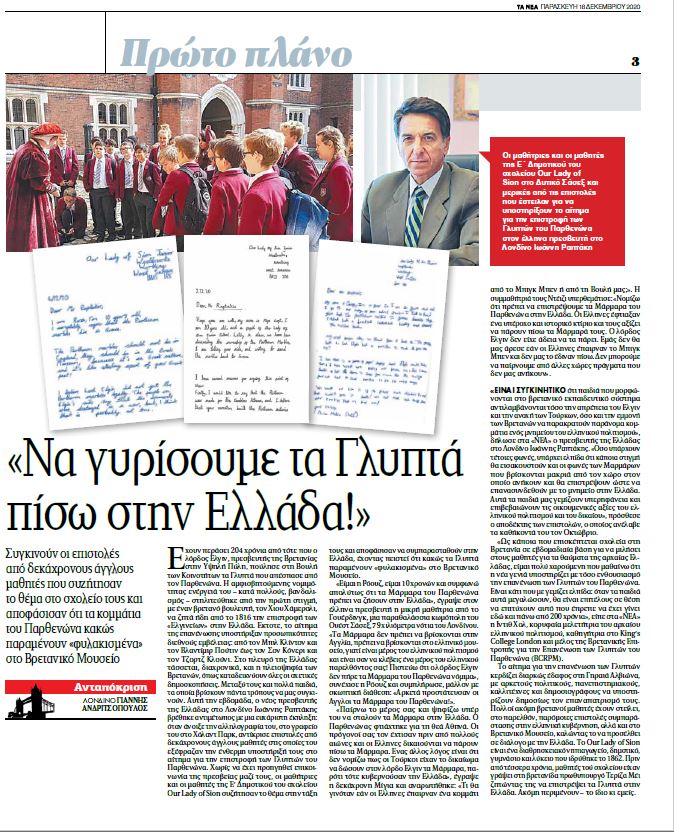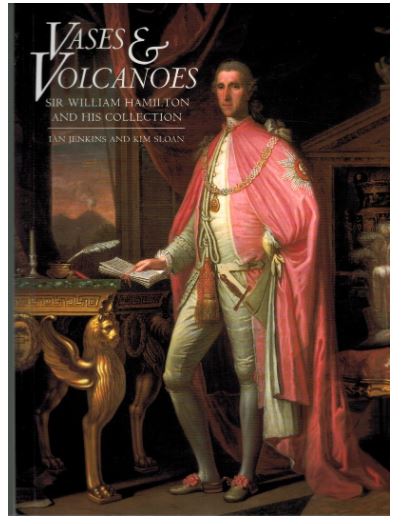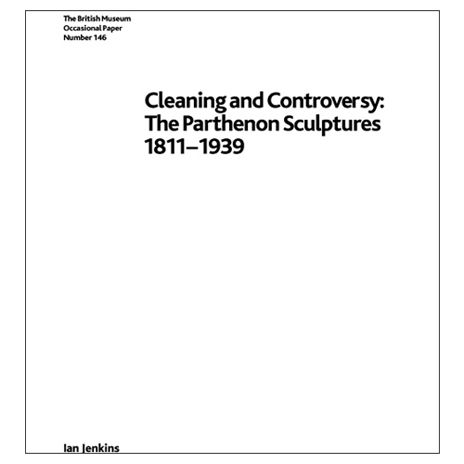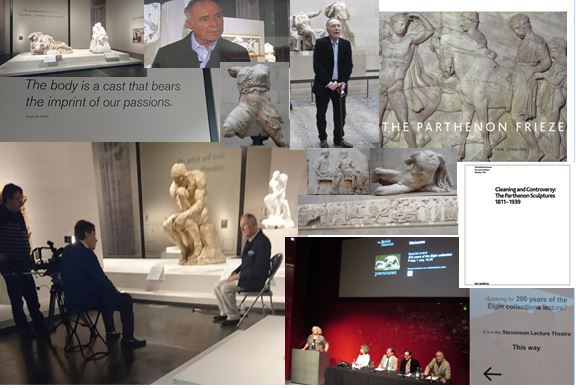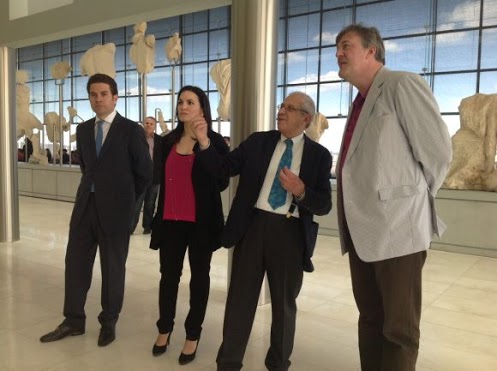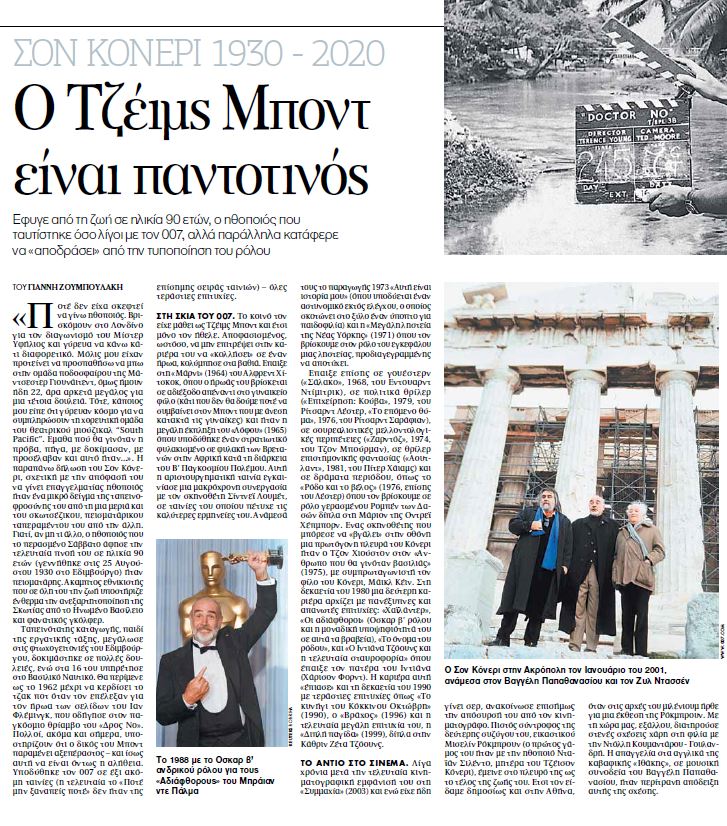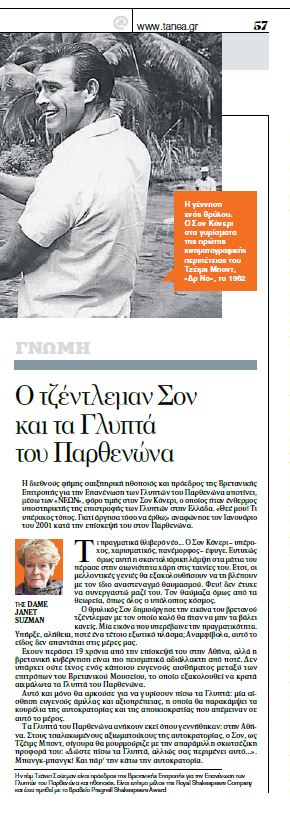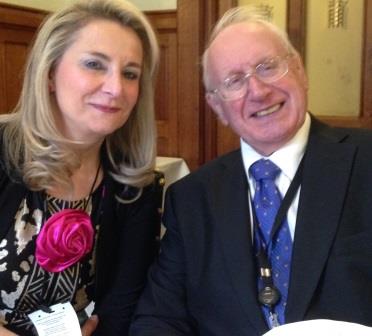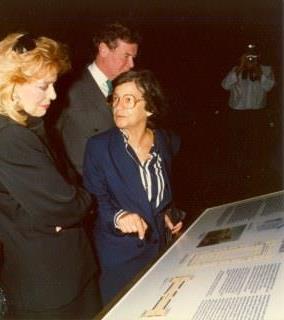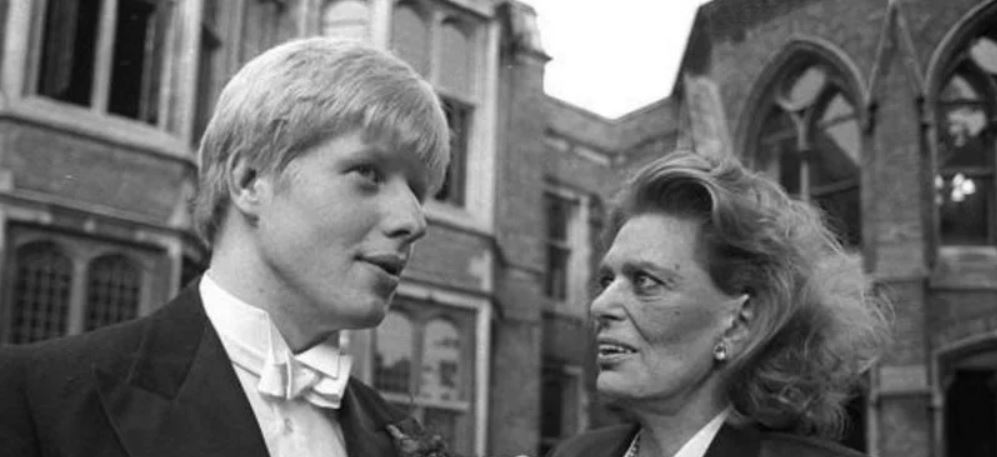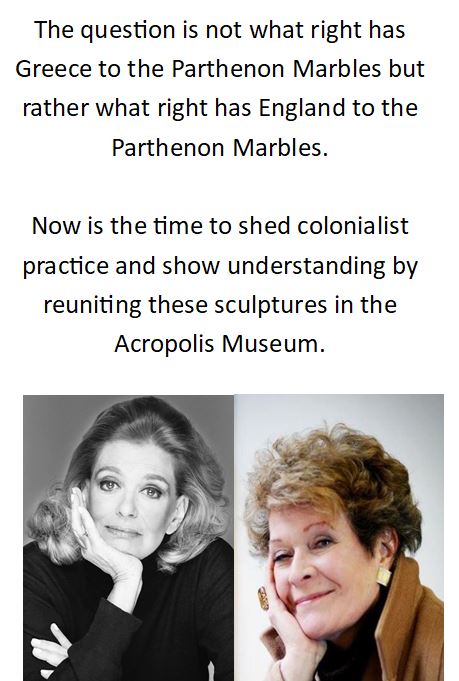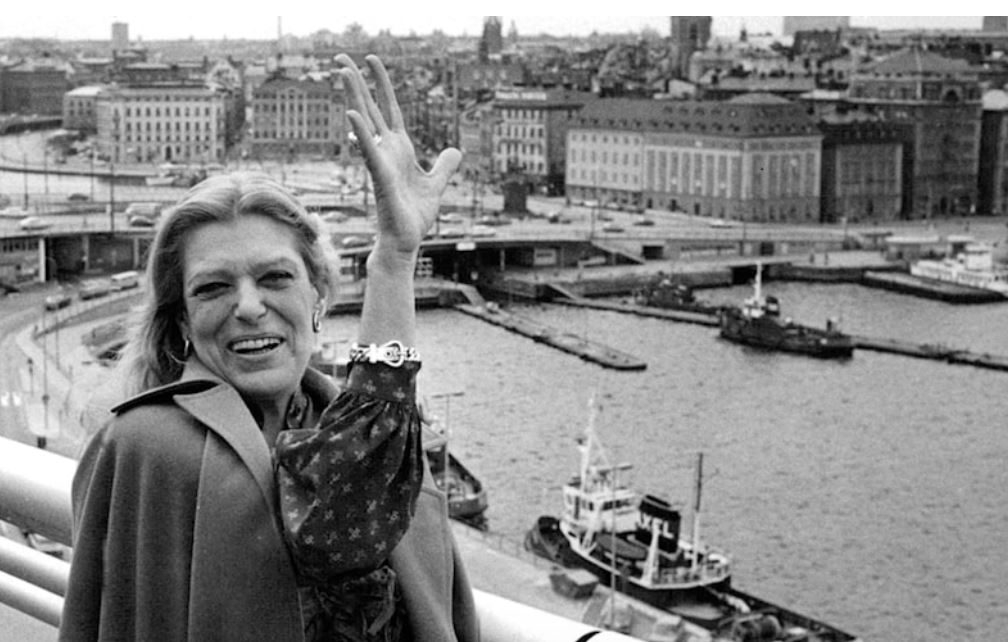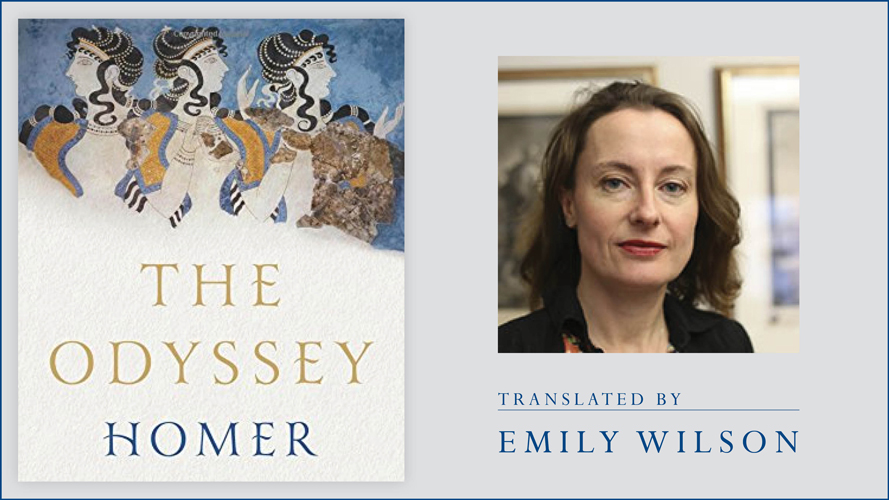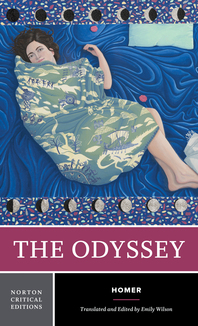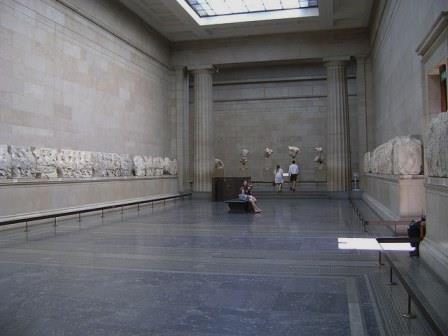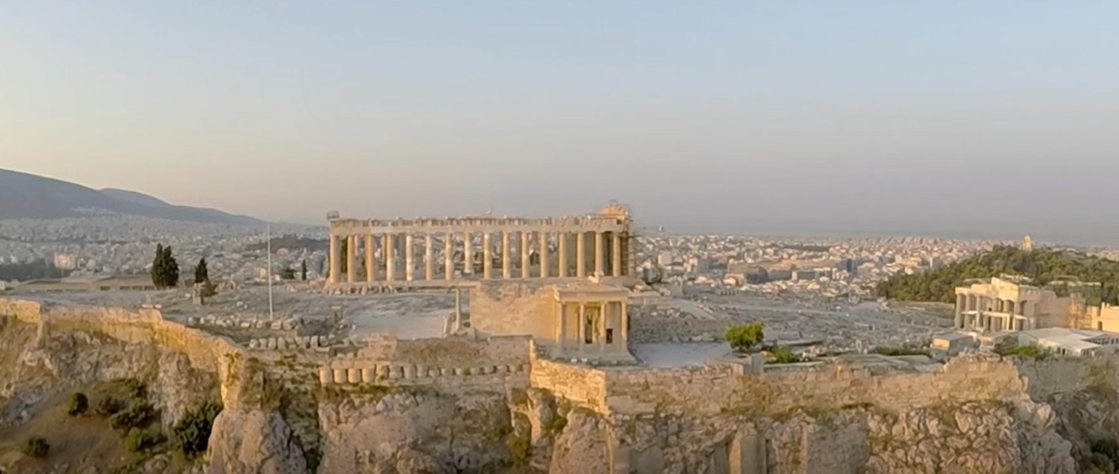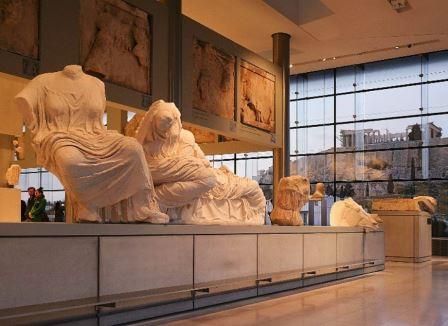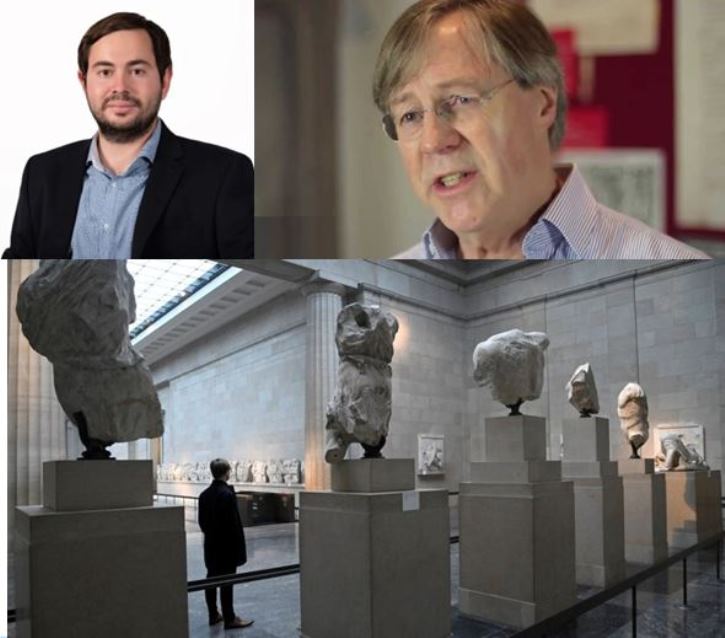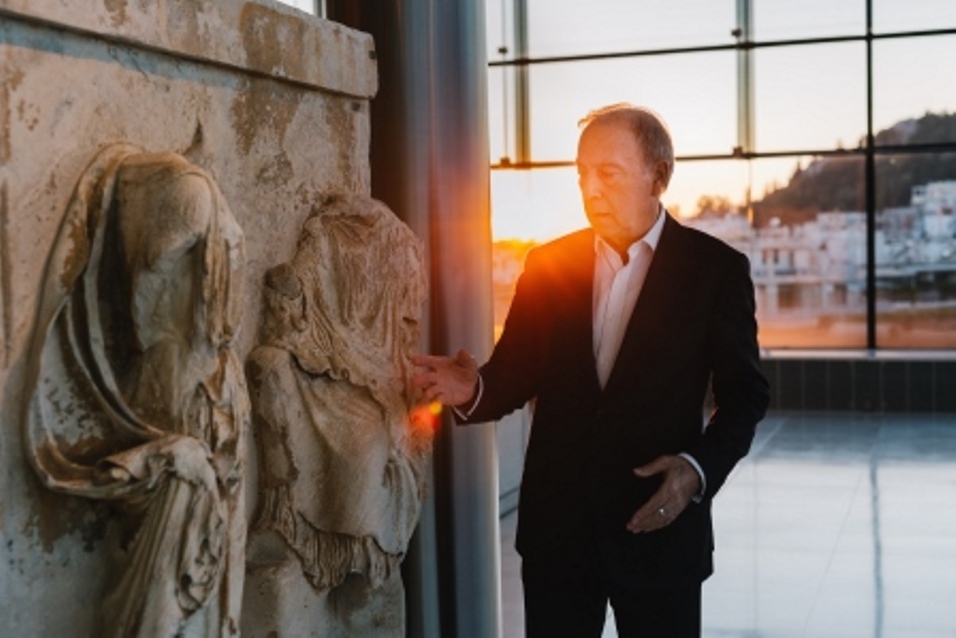It is touching that children educated in the British education system understand Elgin's impropriety.
Ambassador Ioannis Raptakis
H.E Ambassador Ioannis Raptakis took up his post at the Greek Embassy in London in October this year and was delighted to receive by post letters written by ten- year-old students from Our Lady Of Sion School in West Sussex.

The letters were the culmination of student discussions on the plight of the Parthenon sculptures in the British Museum.
Yannis Andritsopoulos, Ta Nea's UK correspondent's article was published on page 3 of today's Ta Nea, 18 December 2020.
Ambassador Ioannis Raptakis was both surprised and delighted when he opened his correspondence this week from in his office in Holland Park to find the letters from ten-year-old English students expressing their strong support for the request for the return of the Parthenon Sculptures.
"It is touching that children educated in the British education system understand Elgin's impropriety and the tolerance of the Ottomans guarding the Acropolis at the time, as well as the British's insistence on withholding pieces of a monument to Greek culture," Greece's ambassador to London, Ioannis Raptakis, told Ta Nea. "As long as there are such voices, there is hope that at some point the Marbles that are here in London, will return to reconnect with the Parthenon in Greece. These children fill us with pride and affirm the universal values of Greek culture."
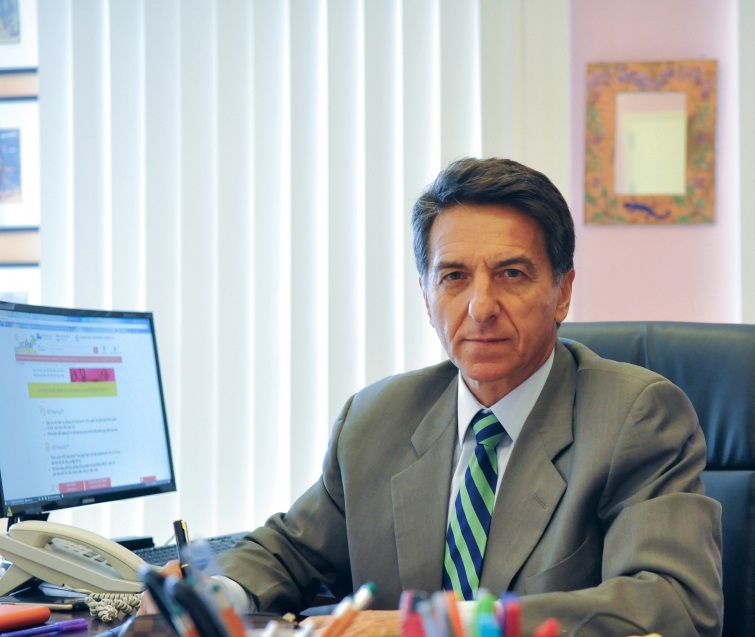
Edith Hall Professor of Classics at King's College London and a BCRPM member added: "as someone who visits schools in Britain on a weekly basis to talk to students about the wonders of ancient Greece, I am very happy to learn that the new generation is so enthusiastic about reuniting the Parthenon Sculptures. It is something that fills me with hope: when these children grow up, they will finally be able to achieve what should have been done more than 200 years ago."

It has been 204 years since Lord Elgin, sold the Parthenon Marbles to the British government and his actions, which were questioned by British MP's then, continue to be questioned today. More MP's have joined the call for reunification in the last decade and since the opening of the Acropolis Museum in June 2009. BCRPM also continue to remember the efforts of two distinguished politicians: Christopher Price and Eddie O'Hara, both were BCRPM members and Christopher Price served as Vice-Chair (1990 -2015) and Eddie O’Hara as Chair (2010-2016).
Time has stood still and the exhibit of the sculptures in the British Museum's Room 18 is suck in a time warp. Will the BM listen to young people? The BM's Director Hartwig Fischer told Ta Nea that keeping them divided was a ‘creative act’ and the BM continues to justify retaining the sculptures on the grounds that in London, they are seen in the context of world cultures.
In December 2014, the river-god Ilissos was sent by the then British Museum Director Neil McGregor to the State Hermitage Museum in St Petersburg to help celebrate the institution’s 250th anniversary . More recently, the late Ian Jenkins, senior curator of ancient Greece at the British Museum moved a selection of sculptures into the exhibition celebrating 'Rodin And the Art of Ancient Greece' (26 April - 29 July 2018).
As Greece has just revised provision which allows for museum collections to be loaned abroad for 25 years and then be renewed for another 25 years, long-term displays in foreign countries could take place for a total of 50 years provided there are sufficient guarantees for the safe transport, exhibition and return of the artifacts.
The museums of Greece have tens of millions of movable monuments, which are kept in warehouses.
“Of these, some, selected by the museums themselves and after obtaining the approval of the Ministry of Culture and Sports and the Central Archaeological Council, respecting the provisions of the Archaeological Law (Law 3028/2002), will be able to be exhibited as a single collection with long-term borrowing in museums or exhibition spaces abroad, at the same time retaining the name of the museum that lends its objects.”
"It is very important for the promotion of our cultural wealth that we have the opportunity to show our important and precious ancient artefats located in the warehouses of the Ministry in museums. This is a very big contribution to Hellenism because instead of being in the dark of the warehouses they will shine and highlight Greek culture," concluded the Minister of Culture and Sports, Dr Lina Mendoni.
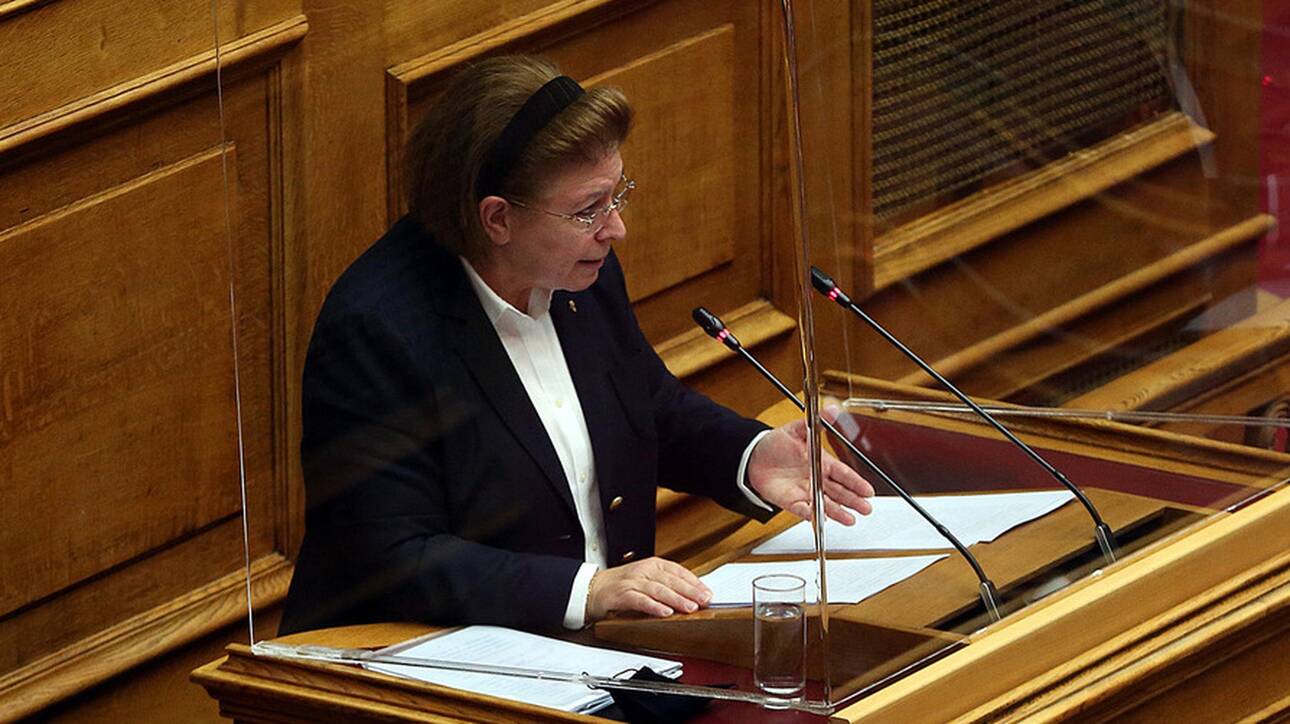
As 2020 comes to a close, we continue to look to the UK and the British Museum to embrace the voices calling for change and understanding, and to find a way with their Greek cunterparts, to facilitate the long awaited reunification of the Parthenon Marbles, in the Acropolis Museum.

